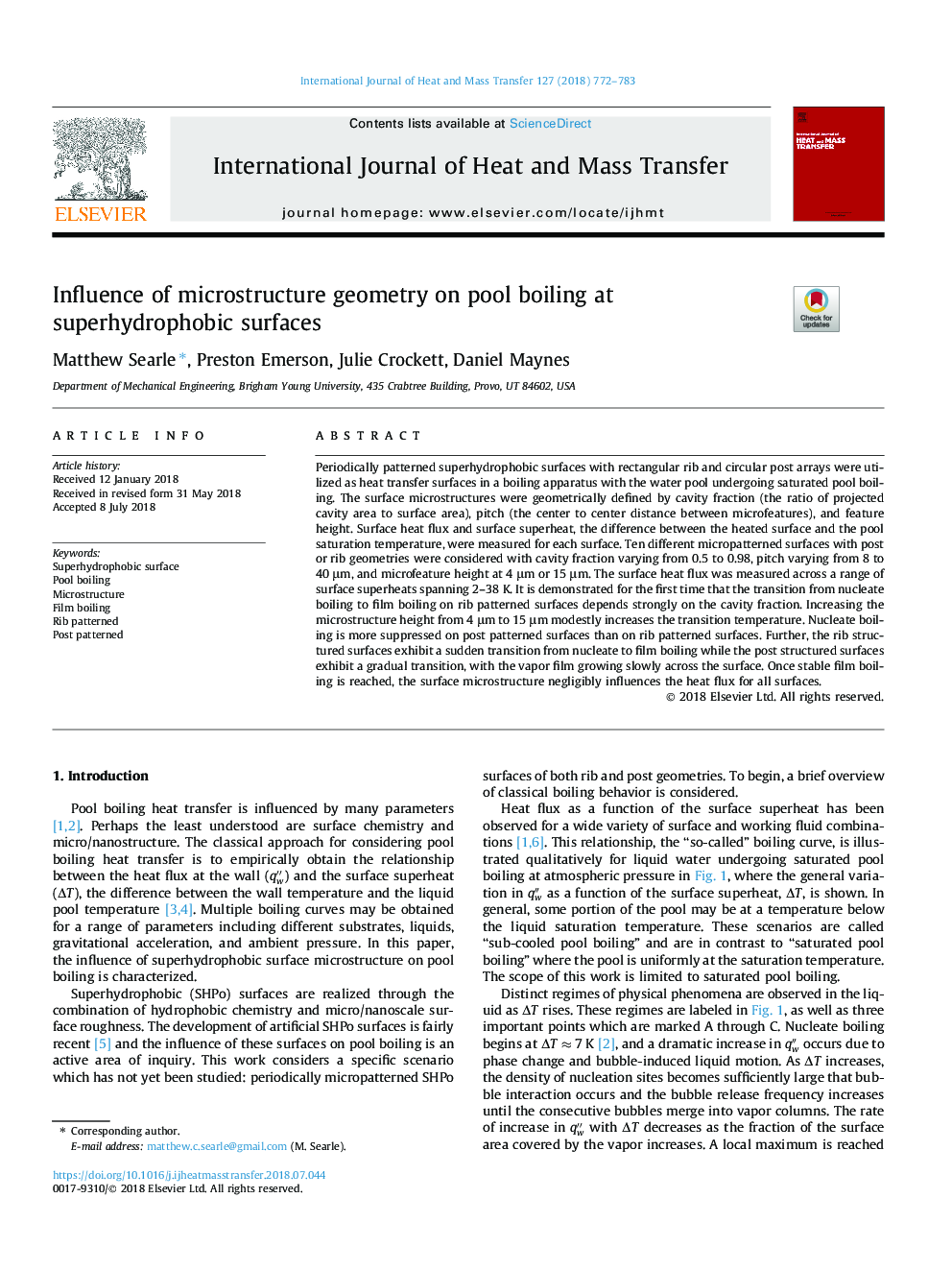| Article ID | Journal | Published Year | Pages | File Type |
|---|---|---|---|---|
| 7053710 | International Journal of Heat and Mass Transfer | 2018 | 12 Pages |
Abstract
Periodically patterned superhydrophobic surfaces with rectangular rib and circular post arrays were utilized as heat transfer surfaces in a boiling apparatus with the water pool undergoing saturated pool boiling. The surface microstructures were geometrically defined by cavity fraction (the ratio of projected cavity area to surface area), pitch (the center to center distance between microfeatures), and feature height. Surface heat flux and surface superheat, the difference between the heated surface and the pool saturation temperature, were measured for each surface. Ten different micropatterned surfaces with post or rib geometries were considered with cavity fraction varying from 0.5 to 0.98, pitch varying from 8 to 40â¯Î¼m, and microfeature height at 4â¯Î¼m or 15â¯Î¼m. The surface heat flux was measured across a range of surface superheats spanning 2-38â¯K. It is demonstrated for the first time that the transition from nucleate boiling to film boiling on rib patterned surfaces depends strongly on the cavity fraction. Increasing the microstructure height from 4â¯Î¼m to 15â¯Î¼m modestly increases the transition temperature. Nucleate boiling is more suppressed on post patterned surfaces than on rib patterned surfaces. Further, the rib structured surfaces exhibit a sudden transition from nucleate to film boiling while the post structured surfaces exhibit a gradual transition, with the vapor film growing slowly across the surface. Once stable film boiling is reached, the surface microstructure negligibly influences the heat flux for all surfaces.
Related Topics
Physical Sciences and Engineering
Chemical Engineering
Fluid Flow and Transfer Processes
Authors
Matthew Searle, Preston Emerson, Julie Crockett, Daniel Maynes,
